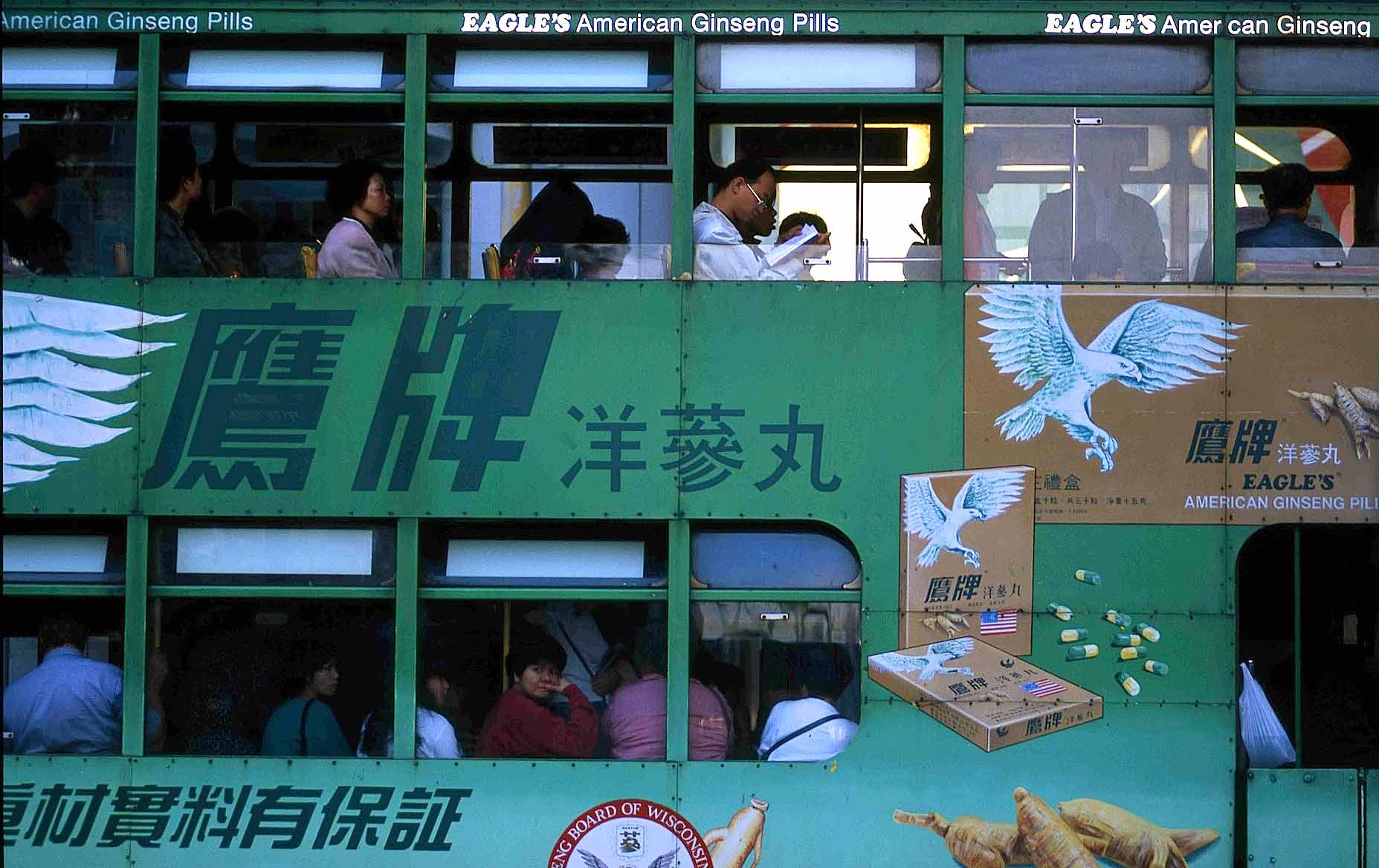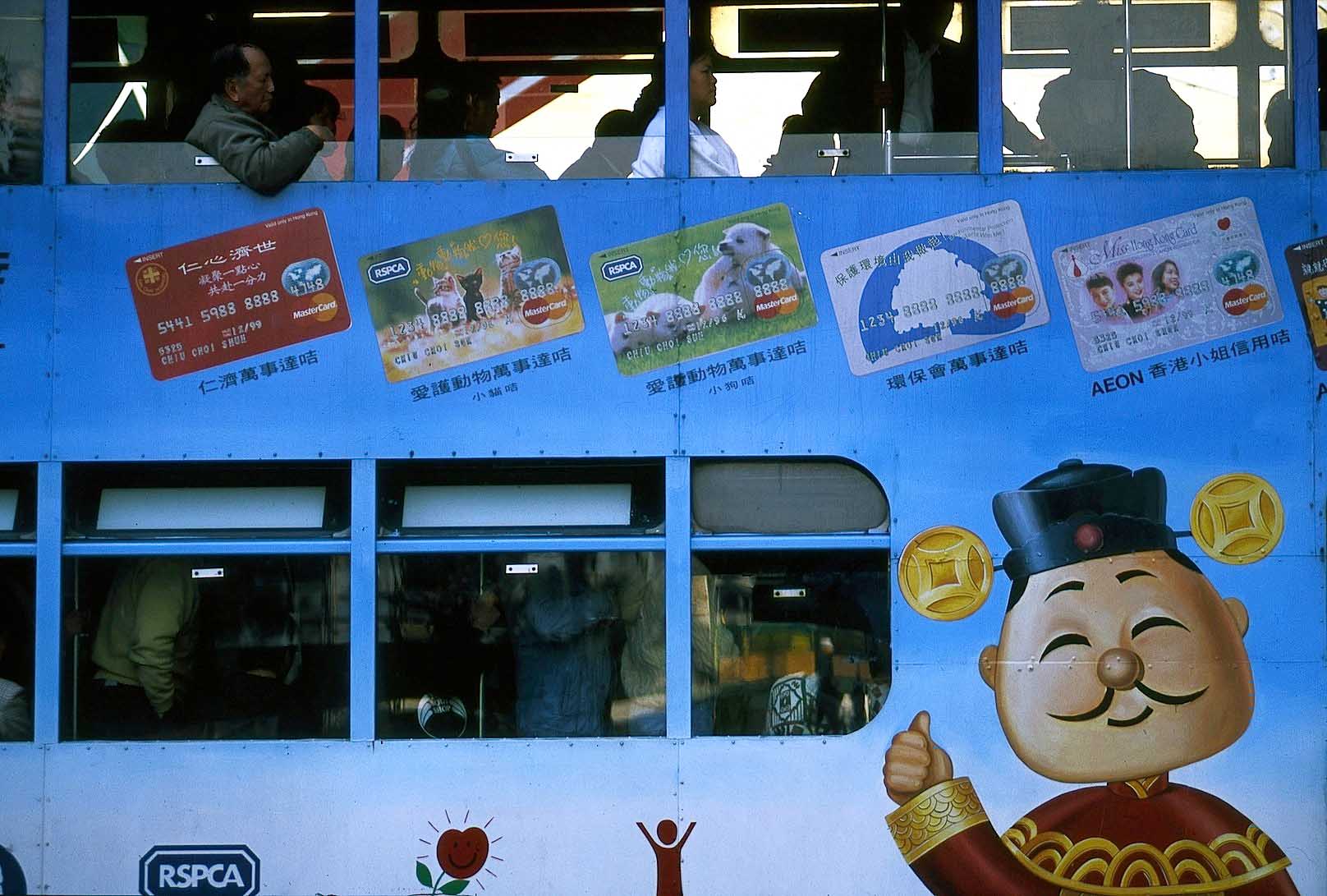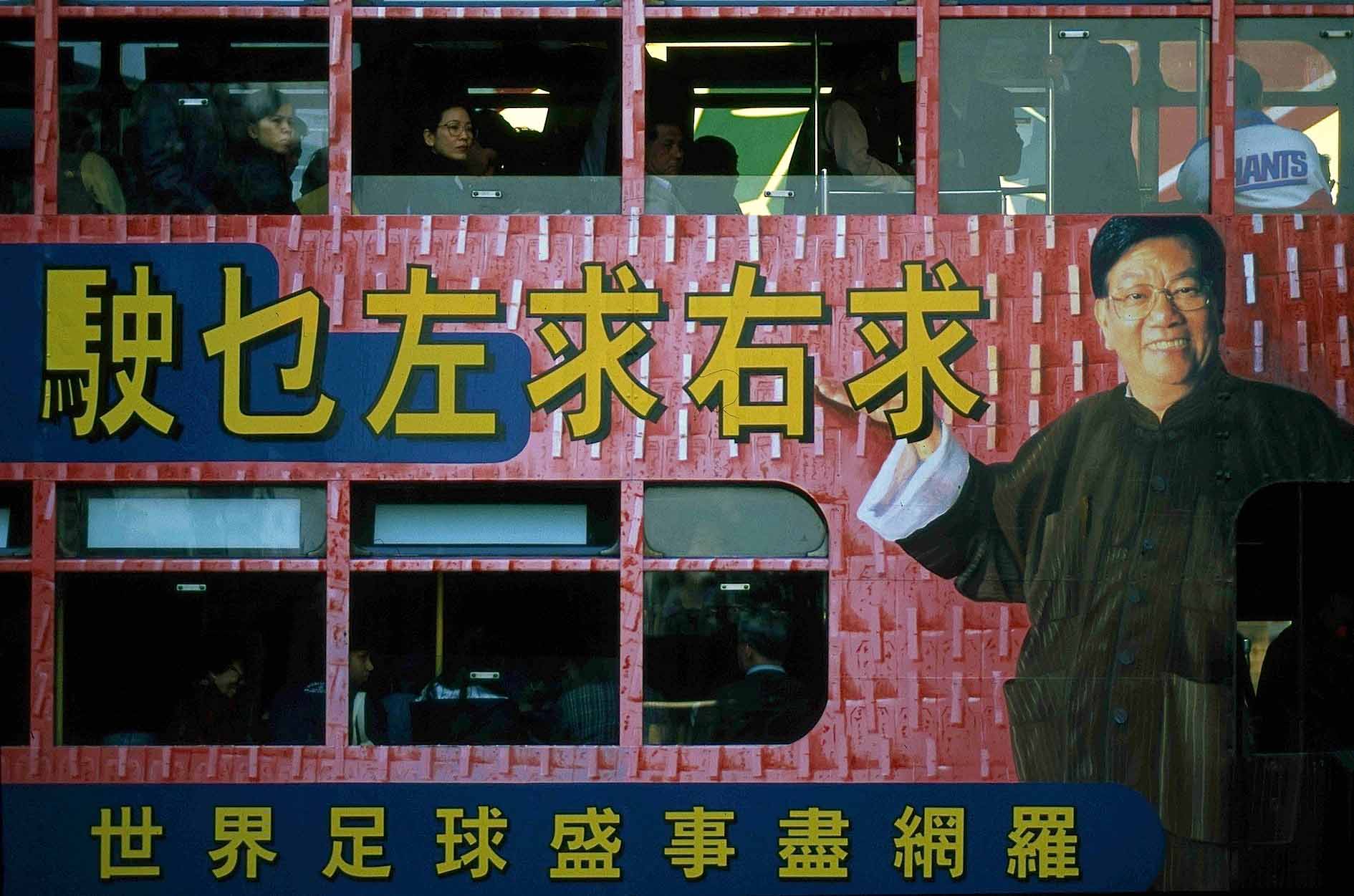Quando nel 1997, pochi mesi prima del passaggio di sovranità dalla Gran Bretagna alla Repubblica Popolare di Cina, per la seconda e ultima volta, visitai Hong Kong, i miei obiettivi si soffermarono con attenzione su due prodotti di chiara matrice britannica: l’architettura dell’Hong Kong and Shangai Bank, completata nel 1985 da sir Norman Foster, e i tram a due piani che transitavano proprio di fronte alla banca, nella stazione di Wan Chai. Erano simili a quelli rossi delle mie escursioni adolescenziali alla scoperta della swinging London negli anni dei Beatles e di Mary Quant, e mi piaceva immaginare che potessero essere stati utilizzati da Suzy Wong. La melodia della canzone dedicata al mondo della giovane prostituta cinese, che era stata, con ordine, la protagonista del romanzo di Richard Mason, del lavoro teatrale di Paul Osborn e del film del 1960 di Richard Quine,
l’avevo ascoltata, forse troppo, da bambino, sparata dalle casse gracchianti di uno Juke box del Plinius, lo stabilimento balneare di Pescara. La interpretava, con voce nasale, Nico Fidenco. Quasi quaranta anni dopo mi ritrovai a fischiettarla mentre, accoccolato su uno scomodo sedile al piano superiore di un tram, mi lasciavo scarrozzare per l’isola, in preda alle ebbrezze da Tropico del Cancro.
Credetti di far bene, allora, di fotografare i tram inquadrando senza che si capisse realmente cosa fossero e utilizzando per la composizione la pubblicità che ne ricopriva le fiancate. A distanza di anni leggo dell’anniversario ultracentenario della HKT, scavo in archivio, e ritrovo queste fotografie, forse eccessi di ermetismo visivo caduti nell’oblio e decido di pubblicarle.
Eccole.



Hong Kong Tramways is one of the earliest forms of public transport in the Chinese metropolis. Owned and operated by Veolia Transport, the tramway runs on Hong Kong Island between Shau Kei Wan and Kennedy Town, with a branch circulating Happy Valley. Trams in Hong Kong have not only been a form of commuter transport for over 100 years, but also a major tourist attraction and one of the most environmentally friendly ways of travelling on the island. It all started in 1904 when bodies of the first fleet of 26 tramcars were built in the United Kingdom. They were then shipped in pieces to be assembled. The tramcars were all single-deck. Ten tramcars were designed for first class passengers and the others were for third class passengers. The first-class compartment was enclosed in the centre with two long benches on both sides, with both the front and back ends open. Seating capacity was 32 passengers. The third-class tramcars were open-sided, with six sets of benches running crossways, back to back, seating 48 passengers. Tram fares for the first and the third class were 10 cents and 5 cents respectively. Initially, the company planned to divide the trams into 3 classes, but subsequently only first and third class were chosen for ease of operation. Owing to strong passenger demand, the first double-deck tramcar was introduced in 1912. The tramcar had an open top design, fitted with garden-type seats. The first class occupied the upper deck and one-third of the lower deck. Ten new tramcars were constructed. After Japanese invasion of 1941 very limited tram service was provided. Only 12 tramcars were in operation daily from Causeway Bay to Western Market. All single-decker trams were retired. After three years and eight months of Japanese Occupation, all 109 tramcars still remained, but only 15 were operational. By October 1945, 40 tramcars were back in service. Only more than 60 years later Hong Kong Tramways launched the seventh-generation tram on November 28, 2011: a combination of modern interior design with traditional tram body exterior. The face-lift allows tram’s iconic image to be maintained. In 2014 Hong Kong Tramways celebrates 110 years of service. The trams run on a double track tramline built parallel to the northern coastline of Hong Kong Island from Kennedy Town to Shau Kei Wan, with a single clockwise-running track of about 3 km around the Happy Valley Racecourse. There are 7 tram termini located along the tram line, namely, from west to east,Kennedy Town, Shek Tong Tsui, Sheung Wan, Happy Valley, Causeway Bay,North Point and Shau Kei Wan; some intermediate stops such as Sai Ying Pun,Admiralty MTR Station, Wan Chai, and Victoria Park are also equipped with turnaround facilities so that they can be used as makeshift termini in emergency situations, such as en-route traffic accidents. Hong Kong Tramways now owns 163 double axle double-decker trams, including two open-balcony dim-sum tourist trams (vehicle numbers 28 and 128) for tourist trips and private hire. The trams themselves are sometimes called the “Ding Ding” by Hong Kong people, being the onomatopoeia of the iconic double bell ring trams use to warn pedestrians of their approach.
Practical information
Total length – 13 km. Operating Hours – 5:30 am to 12:30 am
The current fare is HK$2.30 for adults, HK$1.20 for children under 12, and HK$1.10 for senior citizens 65 and above.


ding ding tram hong kong